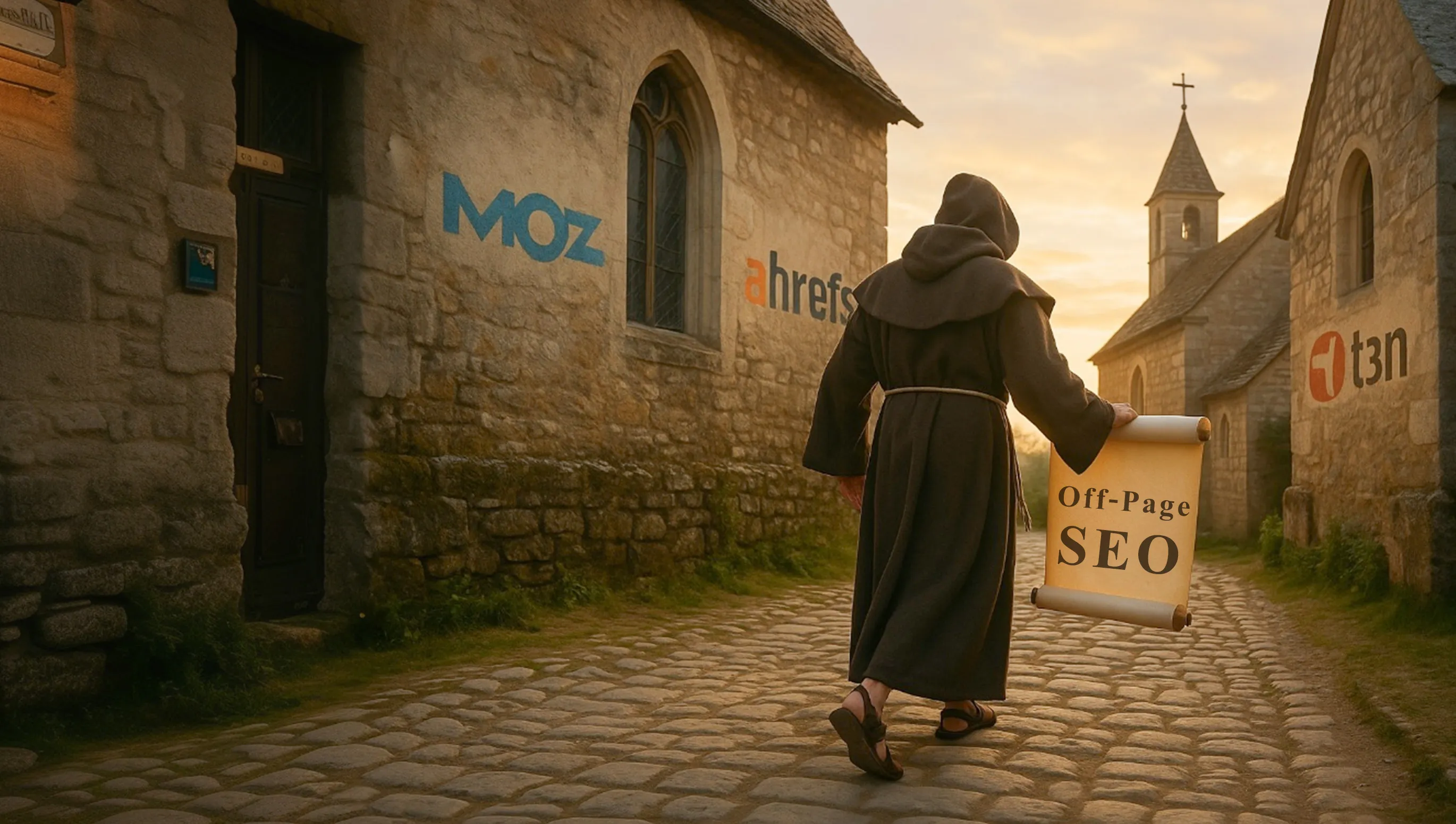Hello, my digital brothers and sisters in faith! Vitalii here, back with the next chapter from the holy book of SEO. If you've just joined us and have never heard of on-page optimization - don't panic! First go to my article "OnPage SEO: The sacred art of page optimization" and learn the basics. Because as it is written: "If you don't have your house (OnPage) in order, you can't go out into the world and proselytize backlinks."
Today we're talking about OffPage SEO - the fine art of backlink missioning. This is the moment when you leave your digital monastery and go out into the wide world of the internet to convince other websites to link to you. Like a missionary spreading the gospel, except that our gospel consists of damn good backlinks.
Because it is written in the holy marketing scriptures: "It is not good for a website to be alone in the digital universe.Therefore, it should go out and connect with other websites through the sacred bond of hyperlinks, so that Google may see it and deem it worthy in the eyes of searchers."
After 13 years of intensive SEO missionary work, I can tell you: OnPage SEO without OffPage SEO is like a hermit with the best sermon in the world - nobody hears him because nobody knows he exists. You can have the most technically perfect website, write the best content and follow all the on-page rules - but if no one links to you, talks about you or recommends you, you'll remain in the digital desert of irrelevance.
Off-page SEO is your digital reputation. It's what others say about you when you're not in the room. And Google listens very closely to these digital conversations.
Table of contents
What is OffPage SEO?
Because it is written in the digital revelations: "And Google saw that it was not good for a website to be alone on the Internet without witnesses about it. And He created an algorithm that judges websites not only by their inner content, but also by what others say about them.And He called this OffPage SEO, and He saw that it was good."
OffPage SEO is everything that happens OUTSIDE your website but affects its positions in search results. If OnPage SEO is your house that you furnish as you please, then OffPage SEO is your reputation in the neighborhood. You can build the most beautiful house in the world, but if the neighbors think you're a weirdo, no one will come to visit.
Google looks at your website through the eyes of the entire internet. Are authoritative resources linking to you? Do they mention your brand on social media? Are industry experts recommending you? All of this tells Google: "This website is valuable, its content is useful, people trust it."
OnPage vs OffPage - The difference between home and reputation
OnPage SEO is like furnishing your house:
- You control every detail
- You can change everything at any time
- The result depends only on your efforts
- You work within your website
OffPage SEO is like building a reputation in the city:
- You depend on the opinion of others
- You can't force anyone to speak well of you
- The result depends on the quality of your relationships
- You work outside your website
The three pillars of OffPage SEO
After many years of digital missioning, I have identified three main pillars on which all external optimization is based:
1. backlinks - Digital testimonials These are links from other websites to yours. Each link is like a recommendation: "This website is worth it, check it out!" Qualitative backlinks are the foundation of OffPage SEO, the holy grail of all SEO specialists.
2. brand mentions - when people talk about you
Even if you are not linked to, but your name or company name is mentioned - this is also a signal for Google. "Look, this brand is being talked about, so it's important!" This also includes Google My Business - your official business card in the Google ecosystem, where customers leave reviews and you show the world that you really exist.
3. social signals - modern word-of-mouth advertising Likes, shares, comments in social networks. There is no direct influence on the ranking, but there is an indirect one - a lot! A viral post can bring thousands of visitors and dozens of natural links.
Why Google trusts external signals so much
Imagine this: You're looking for a good dentist. Who would you trust more?
- A doctor who says about himself: "I'm the best dentist in town!"
- Or a doctor recommended by 50 satisfied patients?
Google thinks the same way. A website can write whatever it wants about itself (OnPage SEO), but if other authoritative resources don't link to it and don't talk about it - maybe it's not as good as it claims to be.
External links and mentions are an honesty check. They are harder to fake (although some try and get a slap on the wrist from Google), so the search engine trusts them more.
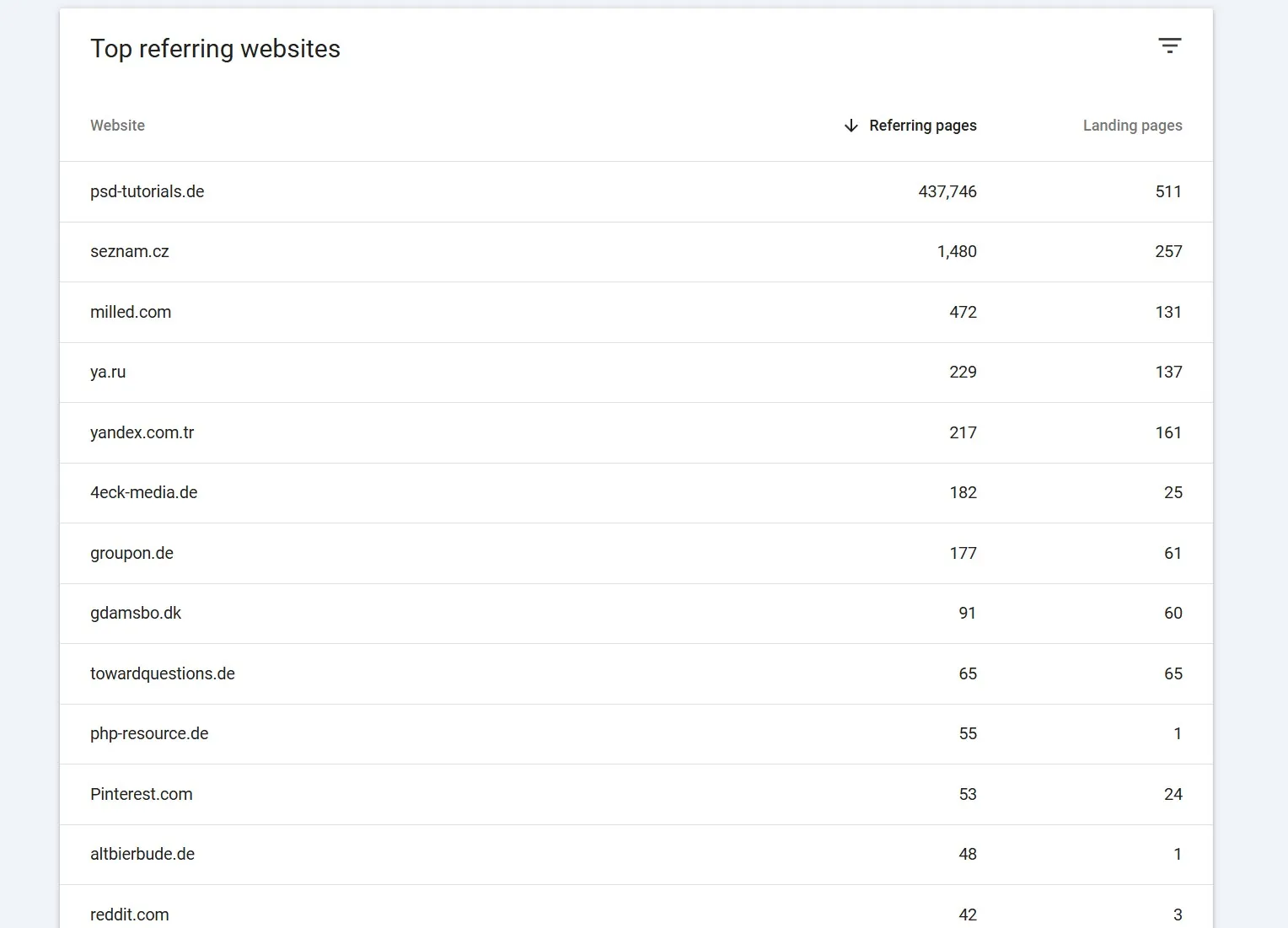
The evolution of OffPage SEO - from quantity to quality
In the dark ages of early SEO (2000-2010), the principle of "more = better" applied. SEO specialists bought thousands of links from dubious websites, created spam farms and enjoyed rising positions. But Google got smarter.
The Penguin algorithms and other updates caused a veritable apocalypse in the black hat SEO world. Websites that had been buying spam links for years lost 80-90% of their traffic overnight. Many companies literally went bankrupt overnight.
Today, Google rates:
- Source quality (domain authority)
- Relevance (thematic proximity)
- Naturalness (how links grow over time)
- Diversity (links from different types of websites)
- Context (in which environment the link is located)
One link from an authoritative topical resource is worth more than 100 links from catalogs and forums. This is the new reality of OffPage SEO.
My approach to digital missionary work
In 13 years, I've come to understand: The best OffPage SEO doesn't come from buying links, it comes from creating truly valuable content and building relationships in the industry.
My clients get links not because we buy them, but because we create content that people want to cite and recommend. We build reputation, and links come as a natural consequence.
It takes a long time, it's complicated, but it works for years and doesn't fear Google algorithm updates. Because we play by the rules that Google itself has set: "Create value for users, and we'll notice you."
Backlinks - the digital letters of recommendation
Because it is written in the holy scriptures of link building: "Gather backlinks in digital heaven, where neither algorithm updates nor penalties can destroy them.Because where your link treasure is, that's where your ranking will be."
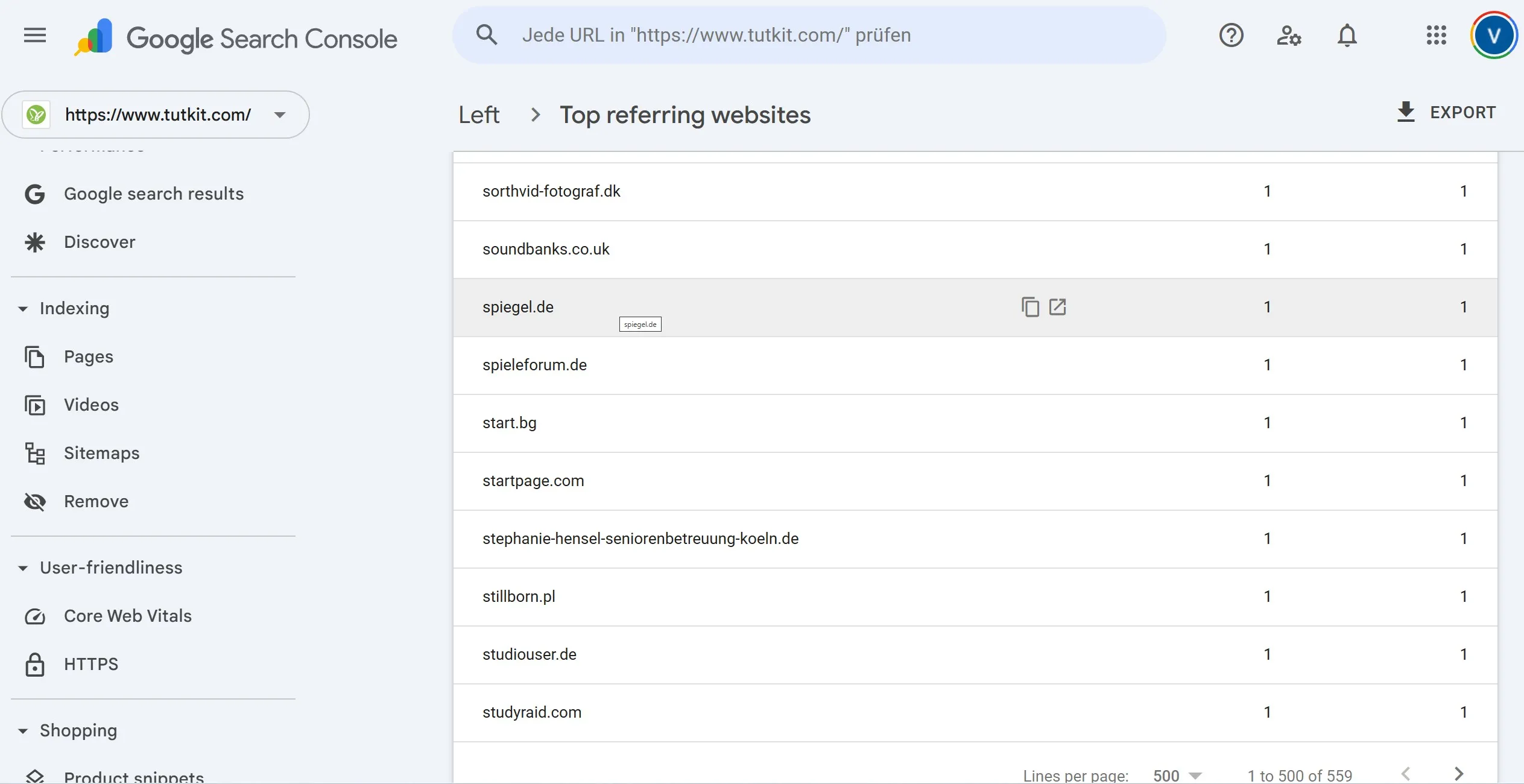
Backlinks are the heart of OffPage SEO - the digital testimonials that other websites write about you. Imagine you are applying for your dream job. Which is more convincing: if you yourself say "I'm the best!" or if 50 former colleagues confirm in writing "He really is the best!"?
Backlinks work in the same way. Every link from another website to yours is like a vote in the great democratic game of the Internet. Google counts these votes and thinks to itself: "If so many people link to this website, it must be good."
But - and this is a damn big but - not all votes are worth the same. One link from Spiegel.de weighs more than 1000 links from dubious catalog sites. It's like voting in an election: the chancellor's vote counts just as much as yours, but his recommendation still carries more weight.
The anatomy of a perfect backlink
After 13 years of backlink missionary work, I know that a good backlink has five sacred qualities:
1. authoritative source (domain authority) The website linking to you should itself command respect on the internet. High domain authority, clean technology, quality content. It's like with friends: If the city mayor recommends you, it carries more weight than a recommendation from the bum in the pedestrian zone.
2. thematic relevance
A link from a gaming blog for your laptop store is worth its weight in gold. A link from a cooking site for the same laptop store is... well, better than nothing, but not ideal. Google understands context and ranks relevant links higher.
3. follow link (not no-follow) Follow links pass on link power, no-follow links do not. But - plot twist - you need both! A natural link profile always has a mixture. Only follow links look suspicious, as if you had bought them.
4. good anchor text The link text should be descriptive, but not over-optimized. "Gaming laptop test" is perfect. "Click here" is a wasted opportunity. "Best gaming laptops buy cheap RTX 4090" is spam and will be penalized.
5. natural context The link should be embedded in a meaningful text, not isolated in the sidebar or footer. If someone mentions your link in an article because it fits, that's natural. If it's in a "sponsor list", it's bought.
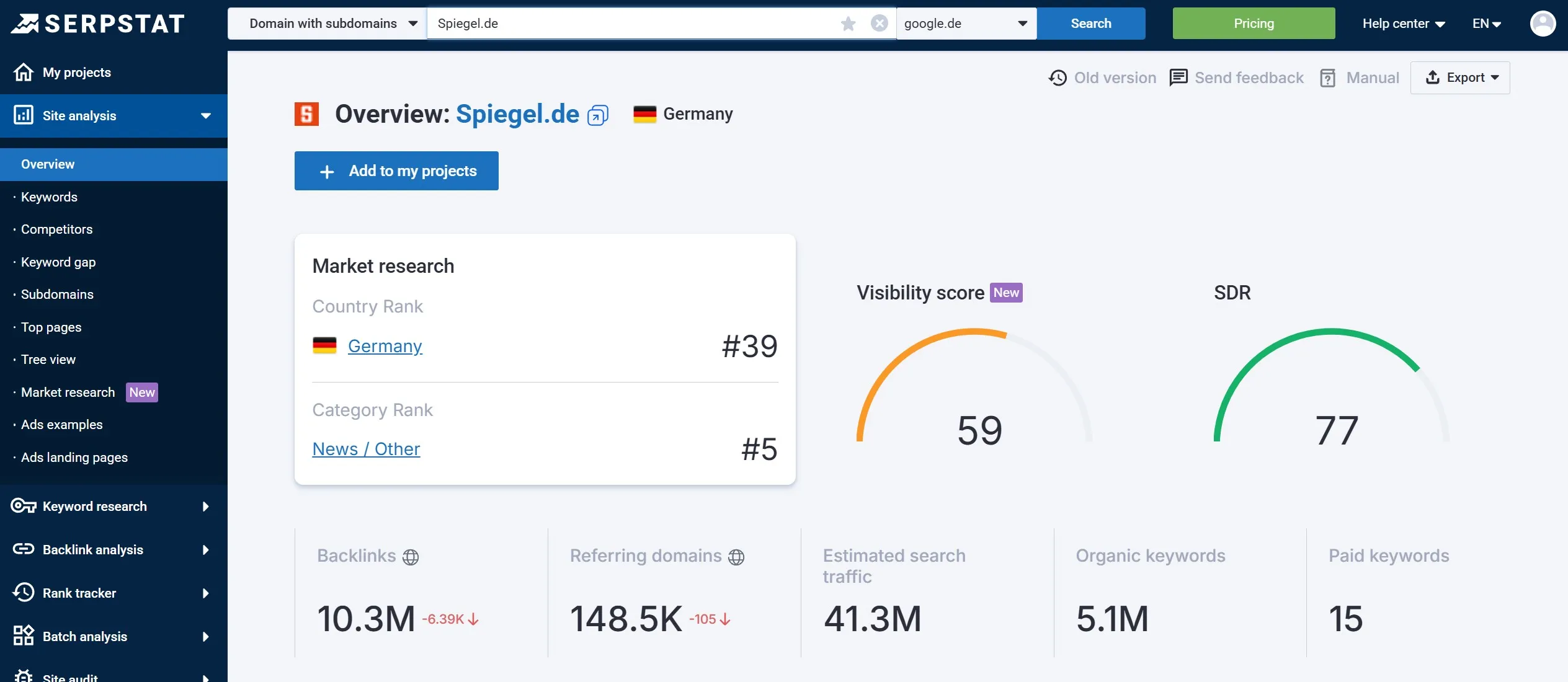
Link quality vs. link quantity - the truth that hurts
In the dark ages of SEO (I was there, for fuck's sake!), "1000 links are better than 10 links." That was bullshit, but we didn't know any better.
Today, one high-quality, relevant link is worth more than 100 spam links. I've seen client websites that had better rankings with 50 perfect backlinks than competitors with 5000 low-quality links.
What makes a link high quality?
- Domain rating of the source website above 30 (with Ahrefs rating)
- Thematic relevance to the target page
- Natural anchor text
- Link in the content, not in the sidebar/footer
- No suspicious neighboring links on the same page
What makes a link toxic?
- Links from porn, gambling or pharma sites (unless you are in the industry)
- Page-wide links (the same link on 1000 subpages)
- Links with exact-match anchor texts in bulk
- Links from known link farms or PBNs
- Links from hacked websites
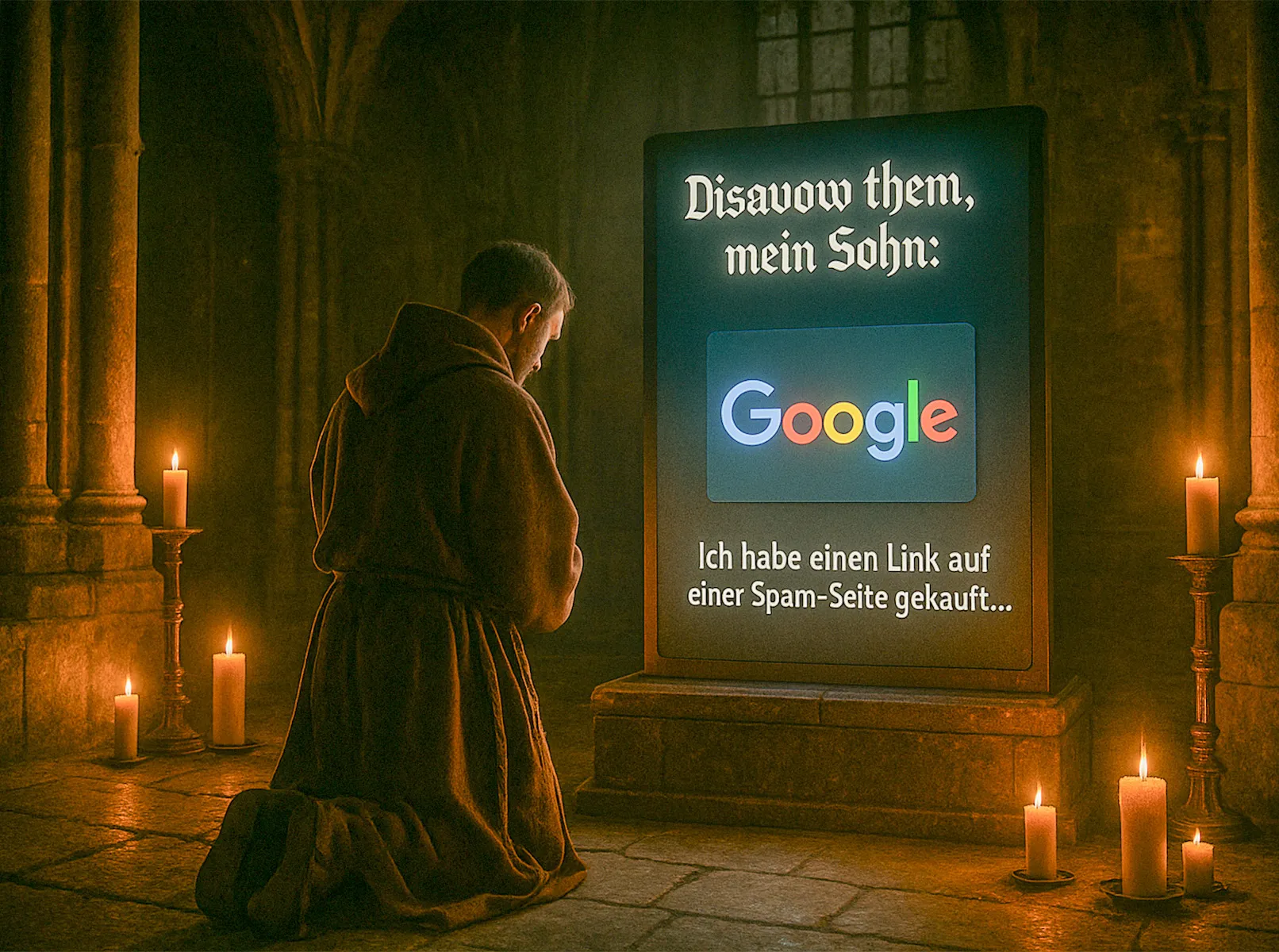
Domain Authority and Page Authority - The SEO currency
Domain Authority (DA) and Page Authority (PA) are like credit scores in the SEO universe. DA scores the entire website (0-100), PA scores an individual page (0-100).
My DA/PA rule:
- DA 0-20: Hands off, unless it's brand new and super relevant
- DA 20-40: Okay for mass, but not the basis of the strategy
- DA 40-60: Solid links, more of them are welcome
- DA 60-80: Very valuable, hard to get
- DA 80-100: The holy grail, usually only through real PR work
But be careful: DA/PA are artificial metrics from tools such as Moz or Ahrefs. Google uses its own secret ratings. The tool values are a guide, not the law.
Follow vs. NoFollow - the misunderstood duo
In 2005, Google introduced the NoFollow attribute to combat spam. NoFollow links theoretically do not pass on any link power. In practice, it is more complicated.
Follow link: <a href="https://dein-shop.de">Gaming laptops</a>
NoFollow link: <a href="https://dein-shop.de" rel="nofollow">Gaming Laptops</a>
The truth about NoFollow:
- NoFollow links still bring traffic
- They diversify your link profile (looks more natural)
- Google sometimes ignores the NoFollow attribute
- Large platforms (Wikipedia, Reddit) often use NoFollow
A healthy link profile has 70-80% Follow links and 20-30% NoFollow links. Only Follow links are suspicious, only NoFollow links are useless.
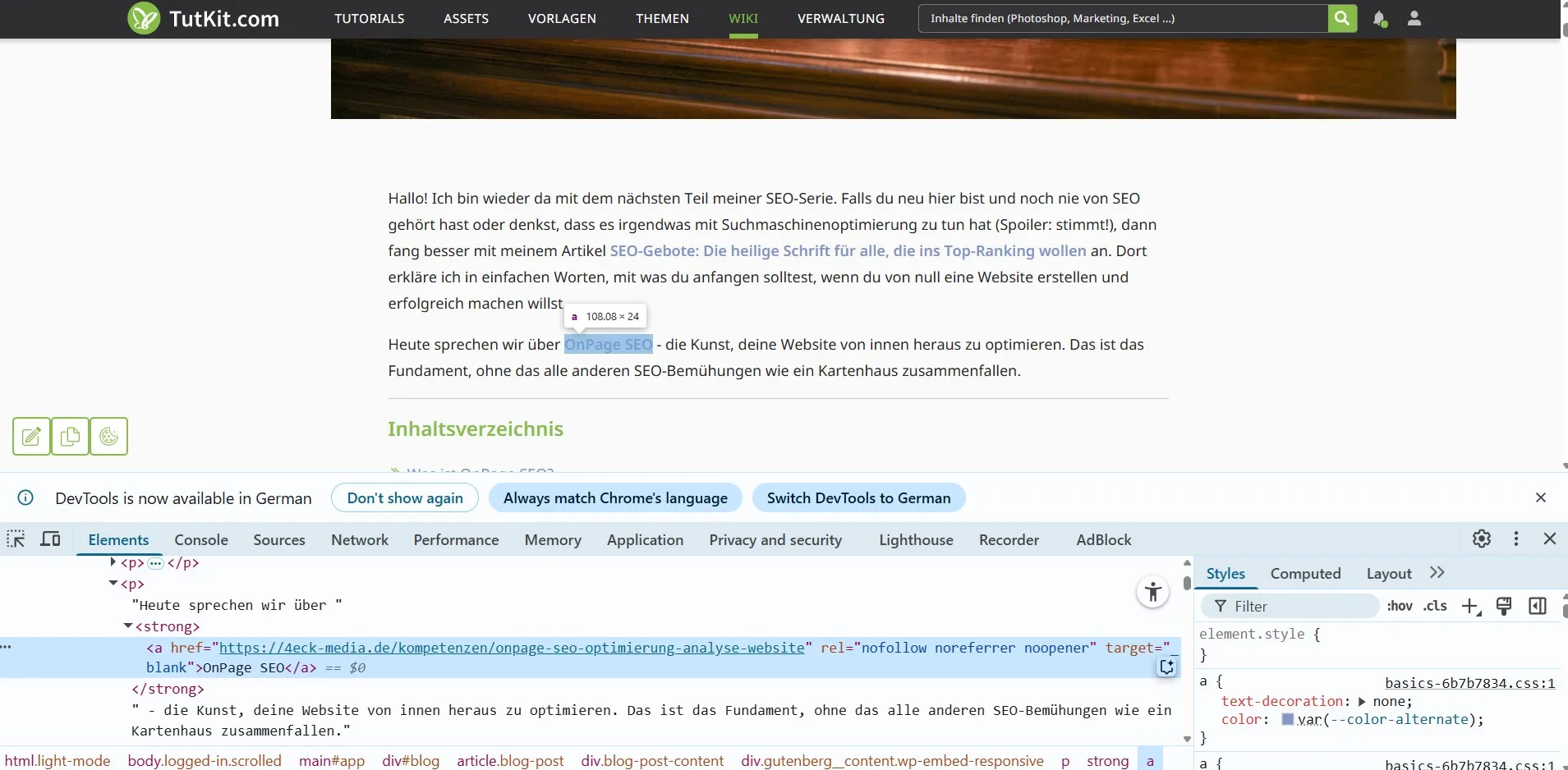
Link velocity - The speed of trust
Link velocity describes how quickly you get new backlinks. Too fast = suspicious. Too slow = you are not growing.
Healthy link velocity for different website types:
- New website: 2-5 new links per month
- Established local website: 5-15 new links per month
- E-commerce store: 10-30 new links per month
- Large portal: 50+ new links per month
If you suddenly get 100 links in a week, Google will get suspicious. Unless you had a viral hit or were mentioned in major media - then of course the increase is explainable.
Competitor analysis - steal like the pros
The most ingenious hack in link building: look at where your most successful competitors get their links from and get links from the same sources.
Tools for backlink espionage:
- Ahrefs: The Mercedes of backlink tools
- SEMrush: Good for all-rounders, weaker for links
- Majestic: Specialist for link data, complicated to use
- Seobility: German alternative, cheaper
My spy workflow:
- Enter top 5 competitors in Ahrefs
- Analyze their best backlinks
- Check: "Could I also get a link from this source?"
- Work systematically - website by website
Link building strategies - from holy to hellish
Because it is written in the digital commandments: "There is a way that seems right to man, but in the end it leads to Google penalties.And there is a path that is harder and longer, but it leads to eternal placement in the top rankings."
After 13 years of digital missionary work, I have divided all link building strategies into three categories: White Hat (holy methods), Gray Hat (purgatory) and Black Hat (the road to SEO hell). Everyone chooses their own path, but you have to bear the consequences yourself.
White hat link building - the holy methods
These are methods that Google not only approves of, but directly recommends. They work in the long term, require patience, but the result is stable and does not fear algorithm updates.
Content marketing & digital PR - creating content magnets
Principle: Create content so good that people naturally want to link to it.
How it works: Imagine you're an expert on gaming laptops. Instead of writing "Top 10 best laptops" for the 100th time, you create something unique:
- Big studies: "We tested 147 gaming laptops in 2025 and this is what we found out"
- Exclusive data: "Defect statistics of laptops by brand over 5 years"
- Interactive tools: Laptop configurator by budget and games
- Expert guides: "Buying a gaming laptop: 47-page guide from an NVIDIA engineer"
Real-world example: you can't imagine how many times on our websites and our clients' websites our competitors have copied our copy along with the links for internal linking. As I said, I check the data on errors, positions and links every day. You brew coffee in the morning, look at the stats, oops - the number of backlinks has increased. You look at who is linking, oops, a competitor has copied the text word for word. And you think to yourself: "You're a pig, but okay. If you copy along with the link to us in the text, then you're welcome to copy even more." Lesson learned: Never forget the internal linking in articles! 😄
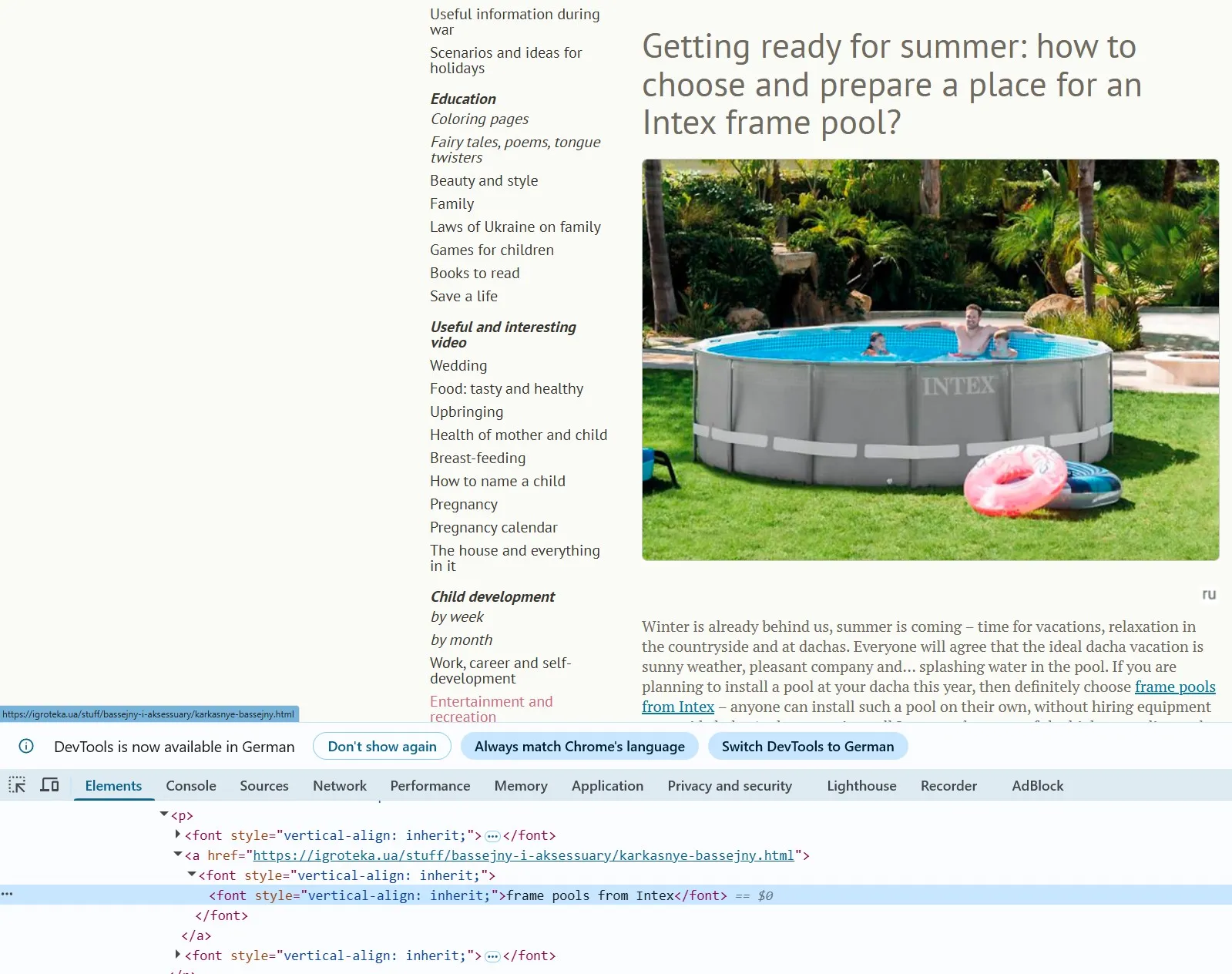
What works best:
- Exclusive studies and statistics
- Detailed guides and learning materials
- Interactive tools and calculators
- Infographics with unique data
- Expert forecasts and opinions
Guest posts - but do it right
Principle: Write quality articles for other websites in exchange for a link.
How NOT to do it (90% do it this way):
- You send out masses of template emails, "I want to write an article for your website"
- You offer an article "Top 10 methods..."
- The article contains 5 links to your website with commercial anchor texts
- You are happy about the "free" link
How to do it right (this is how professionals do it):
- You study the website for 2-3 days, read their best articles
- You suggest a topic that they haven't had before but fits perfectly with their target audience
- You write an article better than their own authors
- You put a maximum of 1-2 links to your website, embedded in context of course
- You don't just get a link, you get new readers and potential customers
My workflow for guest posts:
- I find 20-30 quality websites in the niche
- I study their content, style, target audience
- I come up with a unique topic for each one
- I write a personal email to the editor-in-chief
- I create an article that becomes one of their best
Result: 70% accept the offer because I offer real value and don't just try to "get a link".
Gray Hat Methods - The digital purgatory
These methods are in the gray area. Google doesn't condone them, but doesn't directly ban them either. There are risks, but they are controllable.
Linkable assets - creating link magnets
Principle: You create resources that people like to link to: Infographics, studies, free tools.
Examples of link magnets:
- Interactive calculators: "Power supply calculators for gaming PCs"
- Databases: "Database of all Intel and AMD processors with benchmarks"
- Infographics: "Evolution of graphics cards over 20 years"
- Free tools: "Gaming PC configurator by budget"
Gray area: You create content specifically for links, not for users. Google understands this, but if the content is really useful, it will turn a blind eye.
Competitor backlink stealing - ethically questionable, but effective
Principle: You analyze your competitors' backlinks and systematically "steal" their sources.
This is how it's done:
- You take the top 5 competitors in Ahrefs
- You look at their best links of the last year
- You contact these websites: "I saw that you wrote about [competitor]. We have even more interesting information on the topic..."
- You offer better content or additional expertise
Ethical dilemma: You use the work of others when searching for sources. On the other hand, you offer the websites better content.
Black hat methods - the road to SEO hell
Attention. The following is just information to help you understand what NOT to do. These are methods that are guaranteed to get you Google penalties.
What you should never do:
1. buying links from exchange websites like "buy 1000 links for 50$" - direct path to ban. Google recognizes such schemes in seconds.
2. private blog networks (PBN) Networks of satellite websites, created only for links. Google finds and destroys entire networks with one update.
3. spam in comments and forums "Great article! By the way, we sell gaming laptops [link]" - this is pathetic and hasn't worked for 10 years.
4. automated link building programs Any software that "automatically creates 10,000 links" is creating 10,000 problems for you.
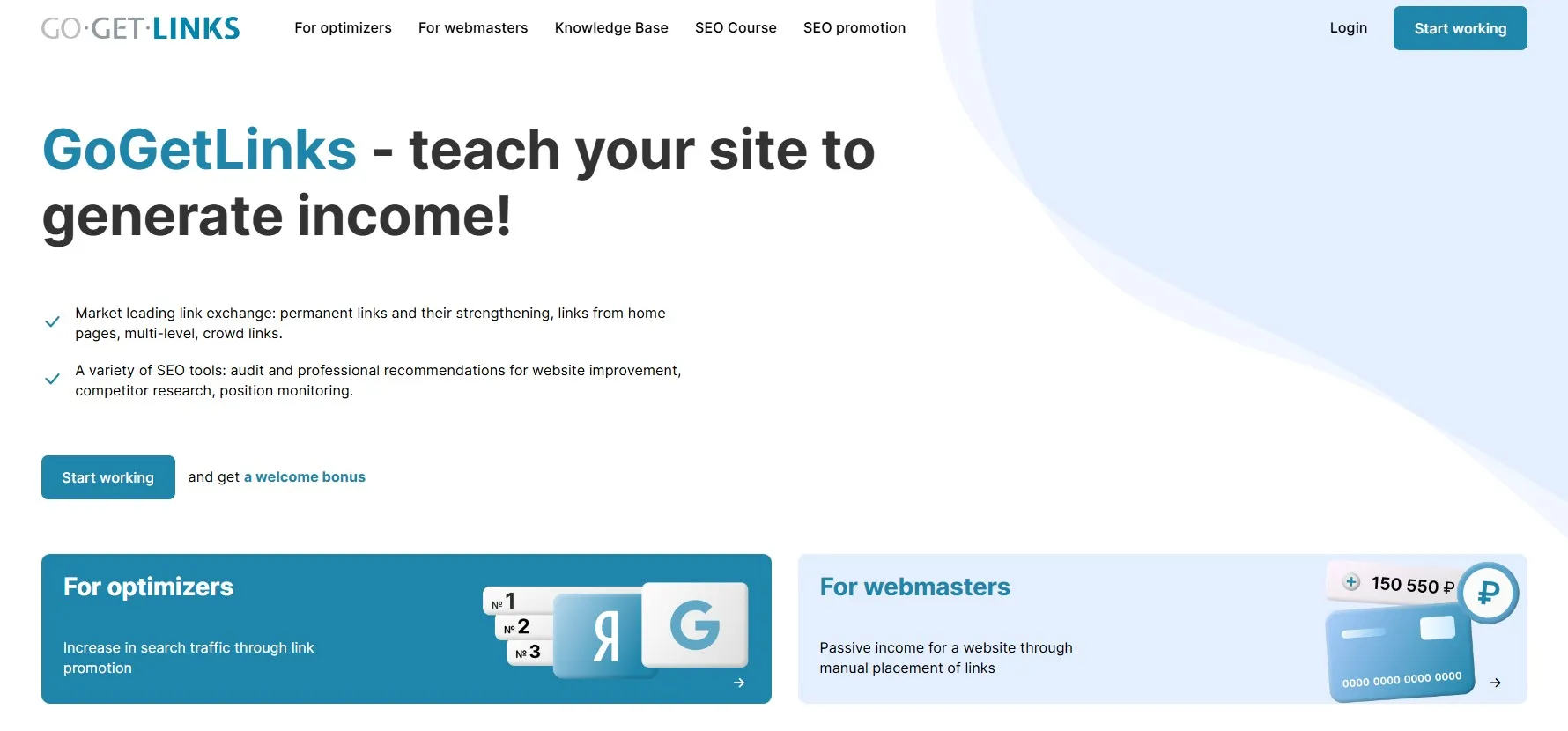
But it is written in the holy marketing scriptures: "Beware of the false prophets of quick rankings, who come in sheep's clothing of low prices, but inwardly they are ravening wolves who will tear your domain reputation apart. For those who buy links for kopecks will reap penalties for years."
Horror stories from real life
My own nightmare: On my first toy website igroteka.kh.ua, someone bought more than 5000 links from competitors. In one day. Those were the cheapest links. This happened in 2015 or 2016 and the domain was put under a filter within a week. Google's review of the complaint took 180 days. I had to change the domain. Rewrite all the texts. In fact, we were left without orders for a year. My religion does not allow me to use such methods against competitors. But as you can see, it works.
Lesson from my experience: black hat methods are not only a risk for those who use them. They are also a weapon that unscrupulous competitors can use against you. That's why it's so important:
- Regularly monitor your own link profile
- React quickly to sudden increases in toxic links
- Have an up-to-date disavow file in the Google Search Console
- Make backups of the entire website (content, settings, data)
The most painful part of the story was not losing positions, but losing a year of work and customer trust. Some lessons cost a lot.
Brand Building & Digital PR - When people talk about you without links
For it is written in the sacred scriptures of reputation: "Let your good name shine before men and search engines, that they may see your good works and glorify your brand, which is in the digital heavens."
This is where the most underestimated part of off-page SEO begins. Most people think: "No link - no benefit for SEO." This is a fundamental misconception! Google has long since learned to understand brand mentions, even without links. When authoritative resources talk about you, mention your name or company name - that's a powerful trust signal.
Brand building is not just marketing. It's the strategic creation of a digital reputation that works 24/7 for your SEO. And the coolest thing: A strong brand protects against negative SEO because Google knows - this is a reputable company, not a one-day website.
Why brand mentions work without links
Google got smarter. The search engine learned to recognize entities - brands, people, companies, products. The algorithm understands: If an authoritative source writes "4eck Media created an excellent website for our client", that's a recommendation, even without a link.
How Google does this: Entity Recognition recognizes that "4eck Media" is a web agency. Co-occurrence Analysis analyzes the context in which the brand is mentioned. Sentiment Analysis understands whether the mention is positive or negative. Authority Evaluation considers the authority of the mention source.
NAP consistency - the holy trinity of local SEO
NAP stands for Name, Address, Phone. This is critically important for local businesses - the information must be identical everywhere! Google checks the consistency of the data. If one location says "Hauptstraße 15" and another says "Hauptstr. 15", the algorithm might think they are different businesses.
The NAP should be identical in Google My Business, on the company website, in all local directories and catalogs, in social networks and business directories. The company name must be the same everywhere, including GmbH or UG, the address in the exact format with standardized abbreviations, the telephone number in a format such as +49 (xxx) xxx-xxxx, the website always with https:// and the opening hours up-to-date everywhere.
Google My Business - your digital business card and SEO powerhouse
GMB is not just directory information. It is a powerful SEO tool, especially for local searches. A properly set up GMB can lift you above competitors with stronger websites in local searches.
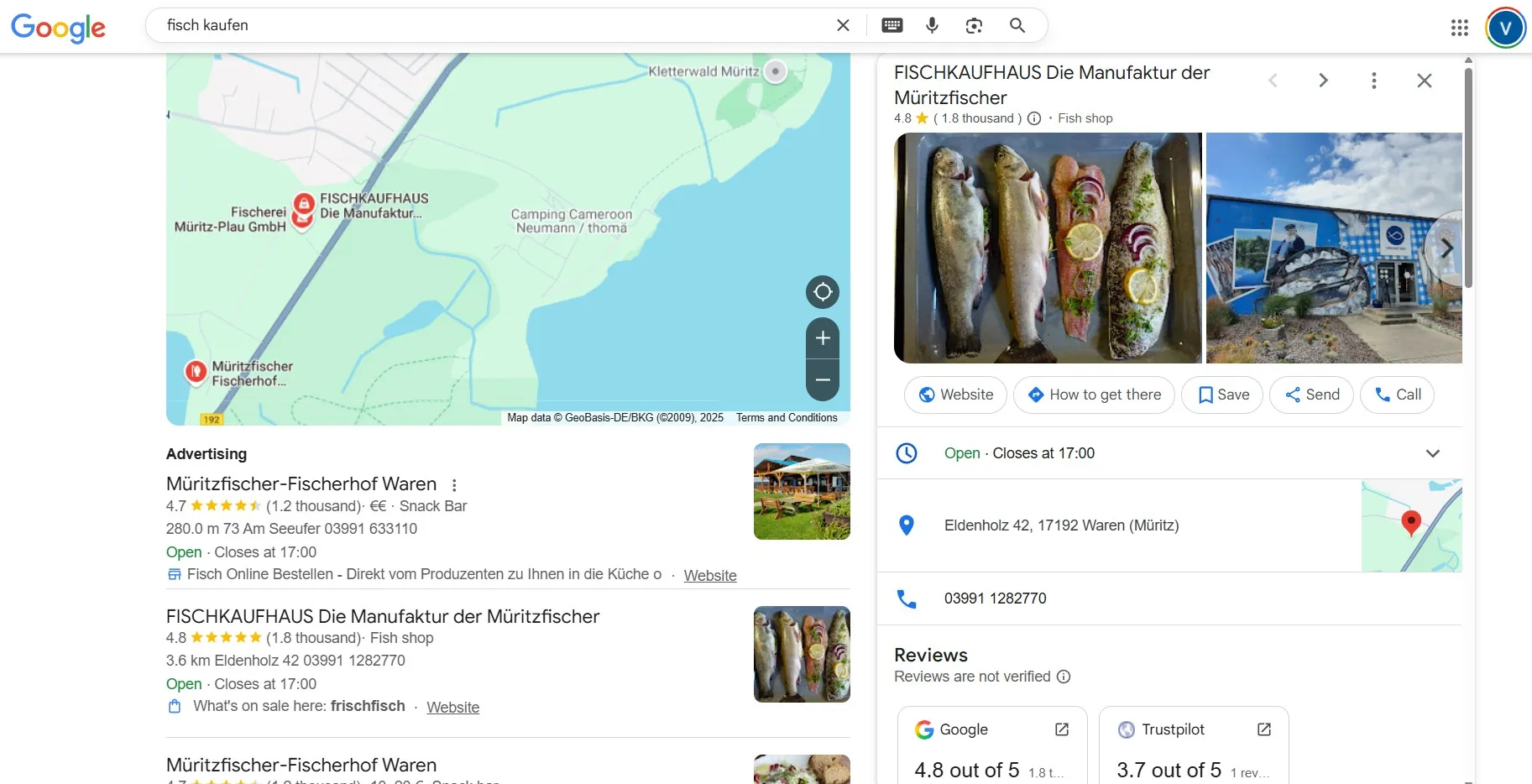
As an immoral SEO specialist, I have even practiced the following: I gave a colleague 30 chocolate bars to get his son to write reviews at school for a chocolate with his sixth form friends.
But it works bloody well! Our partner Fischkaufhaus has 1800 reviews with an average rating of 4.8. His new customers haven't bought anything from him yet, but they already trust him because their herd instinct is starting to kick in. And you have to use this instinct! When people see that 1800 other customers were satisfied, they feel safe and are more likely to buy. This is pure psychology in local SEO.
Google My Business as a local SEO turbo
What many don't understand: Google My Business is one of the strongest local SEO factors of all. An optimized GMB page can make the difference between ranking #1 and #10 in local search results. Why is this so powerful?
First, GMB is directly integrated into Google's ecosystem. When someone searches for "web design agency" in Berlin, Google not only shows organic results, but also the local map pack - and this is where your GMB profile makes the difference between visibility and invisibility.
Secondly, Google sees GMB activity as a strong signal of relevance and trust. Regular posts, responses to reviews, up-to-date photos - all of this signals to the algorithm: "This is an active, lively company, not just a website."
Thirdly, GMB ratings are pure SEO gold. Not just because of the direct ranking effect, but because they create trust and increase the click-through rate. A 4.8-star rating with 50 reviews often beats technically better websites without local signals.
GMB optimization works like a booster for all other SEO efforts. If your website is technically good and contains local keywords, but your GMB is neglected, you are wasting enormous potential. Conversely, a perfectly optimized GMB can also bring a mediocre website to the top in local searches.
What you need to optimize in GMB:
The company profile needs a full description of the business with up to 750 characters including relevant keywords. Choose all appropriate service categories - one main category plus up to nine others. Upload at least ten high-quality photos: office, team, work samples, logo. Make sure opening hours including holidays and weekends are correct. Activate all relevant attributes such as Wi-Fi, parking, accessibility or card payment.
The advanced GMB features are often untapped SEO goldmines. Posts work like a mini-blog directly in the search results - use them for news, promotions and events. The Q&A section lets you proactively respond to customer interest. The products and services catalog with photos and prices makes you more competitive. Online appointment booking directly via GMB reduces friction in the sales process.
Dealing with negative mentions
Not all mentions will be positive. It's important to learn how to deal with criticism and negative reviews. The strategy for dealing with negativity follows clear rules: Respond within 24 hours. If the criticism is public, the response must also be public. If you are at fault, apologize and explain how you will correct it. Always offer a solution. Refer to private communication for details: "Contact me personally, we'll work out the details."
A good response style could look like this: "Thank you for your feedback. I'm sorry that we didn't meet your expectations. That was really our mistake - we didn't explain the technical solution clearly enough in the project meeting. I will contact you personally today to discuss how we can improve the situation. Cases like this help us to improve."
Monitoring of brand mentions
Various tools are available for tracking mentions:
- Google Alerts: free with basic functions
- Mention.com: advanced monitoring
- Brand24: professional tool with analytics
- Ahrefs Alerts: part of the Ahrefs subscription
You should monitor the exact company name, variations of the company name, names of key employees, product or service names and company-specific terms. Systematic monitoring includes daily Google Alerts checks, weekly sentiment analysis of mentions and monthly reports on the quantity and quality of mentions. React immediately to negative mentions.
Brand building is a marathon, not a sprint. The results are not immediately visible, but they are long-term and stable. A strong brand protects you from competitors, attracts better customers and employees, and Google sees and appreciates that.
Social media signals - the modern word of mouth
For it is written in the digital gospels: "Go into all social networks and make followers of all nations, share your content and collect likes, so that your digital reputation may multiply like the sands of the sea and your traffic flow like milk and honey."
Social media and SEO - it's like the relationship between an old married couple. Officially they say: "We're just friends", but everyone knows there's more going on. Google has been saying for years: "Social signals are not a direct ranking factor." And I've been saying for years: "Yes, of course, and Santa Claus brings the presents himself!"
The truth is: social media is your SEO's best buddy. They may not walk down the aisle hand in hand, but without one, nothing goes right for the other. A viral social media post can do more for your rankings than 100 purchased backlinks - just in a roundabout way that Google doesn't like to admit.
Why Google pretends to ignore social media
Imagine you're Google and you have to rank billions of websites every day. Suddenly, social media comes along and says: "Heyer, rate our 50 billion posts a day too!" Google would faint from overwhelm like an intern on their first day at work.
That's why Google does it smart: it officially ignores social signals, but secretly peeks through the back door. When your content explodes on Facebook, it brings thousands of visitors to your website. Google sees this traffic explosion and thinks: "Wow, that must be some great content!" Boom - indirect SEO effect.
It's like a nightclub: Google doesn't stand at the door and count who comes from Facebook. But if 5,000 people are suddenly standing in front of your website at the same time, it will notice that you've done some real advertising somewhere.
The social media secrets that nobody says:
People mainly share content that doesn't suck. That's revolutionary, I know! But seriously, social media works like a giant bullshit filter. Bad content dies on social media, good content becomes a star. Google registers these "stars" via traffic spikes and longer dwell times.
Platform-specific strategies (or: where you shouldn't waste your time)
LinkedIn - The Facebook suit for busybodies
LinkedIn is like a business lunch: Everyone acts professional, but it's really about networking and who has the bigger... turnover. For B2B companies, LinkedIn is still a goldmine if you do it right.
The trick with LinkedIn: don't act like you're trying to sell your products. People are there to look smart, not to buy. So feed their ego with expertise and insider info. An article about "The 5 SEO trends that will change everything in 2025" performs better than "Buy our SEO services".
My LinkedIn secret: Controversial opinions work like magnets. Write "WordPress is overrated" as a LinkedIn post and watch the comments explode. Engagement = reach = traffic = happy Google algorithm.
Instagram - Where food is more important than people
Instagram is the platform where everyone becomes a photographer and thinks the world cares about their lunch. It still works for e-commerce because people buy with their eyes.
The Instagram algorithm is like a capricious toddler: sometimes it likes you, sometimes it ignores you completely. But if it likes you, a single reel can multiply your website visitors. I've seen a 15-second video about "gaming setup fails" get 50,000 views and drive hundreds of visitors to a tech store.
YouTube - The search engine that pretends to be entertainment
YouTube is the second largest search engine in the world after Google. But unlike Google, people search here for solutions to their problems in video form. "How do I fix my cell phone?" - 5 million search queries.
The main YouTube tricks for SEO: You can use videos in two ways. If your video is watched on your website, it increases the time spent on your page - Google loves that. When the video is watched on YouTube, viewers have the opportunity to come to your website via links. Your job is to interest the person and get them to go to your website.
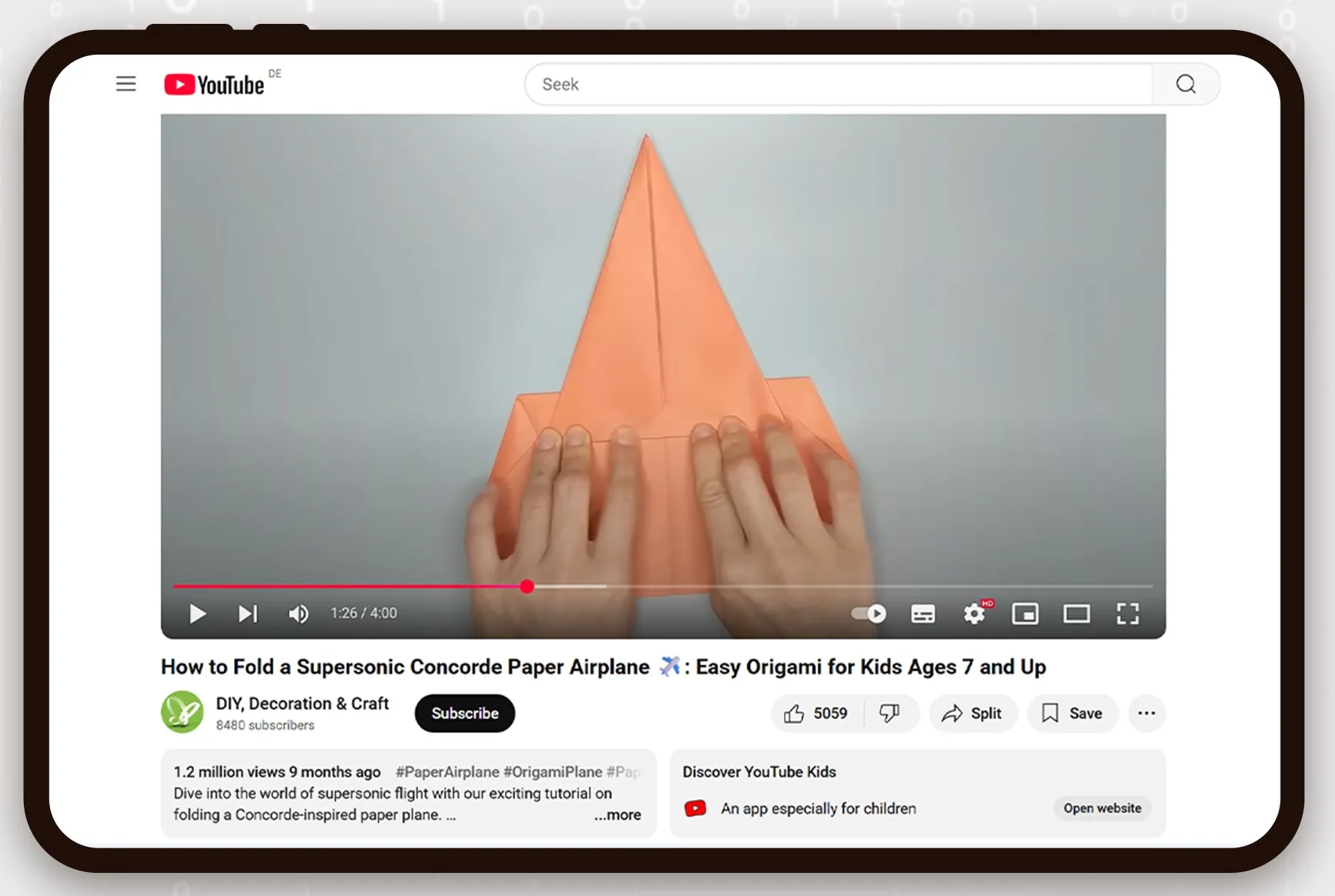
All videos are uploaded to YouTube, TikTok, Instagram and Facebook. A text with links to our portal is written for each video. In half a year of this topic strategy, we have achieved a stable 1000 visitors per day to our portal through a successful strategy.
This worked so well because the topic was interesting, the articles were great and we added content on all platforms with backlinks. This airplane video alone already has over 1 million views. This kind of viral content with strategic backlinks is pure off-page SEO power - natural traffic through valuable content instead of bought links.
Local SEO & Citations - For everyone who wants to be found in the real world
Because it is written in the holy scriptures of local business: "It is better to be known in your own neighborhood than unknown in the whole world.For when your neighbor needs help, he will come to the one he knows and trusts, and not to a stranger from distant lands."
Local SEO is like being the most popular guy in the neighborhood. The whole world may not know you, but in your city or neighborhood, you're the king. And sometimes that's more important than being a faceless star on a global scale.
After 13 years of practice, I can say that local SEO basically boils down to two measures. Google My Business (which we've already talked about above) and the creation of landing pages for individual cities. Period. Everything else is details and nuances.
Landing pages for cities - geography decides everything
This is where common sense and an understanding of your business kicks in. If you have a dental practice in Berlin, it only makes sense to create landing pages for the nearest cities and districts. After all, no customer is going to drive 1000 kilometers to have their teeth treated - that's not medical tourism to Thailand.
But they will buy a laptop with delivery from any corner of the country if the price is lower and delivery is fast. The logic is simple: the more geography you can cover in real terms, the more landing pages it makes sense to create.
For local services (dentist, car repair shop, hair salon): The radius of action is usually 30-50 kilometers. People are willing to travel a maximum of one hour by car for a quality service. Accordingly, you create landing pages for your city and neighboring towns within this radius.
For goods with delivery (online stores, technology): Here, the geography is only limited by your delivery options. If you deliver throughout Germany - create landing pages for all major cities. If only within the federal state - focus on that.
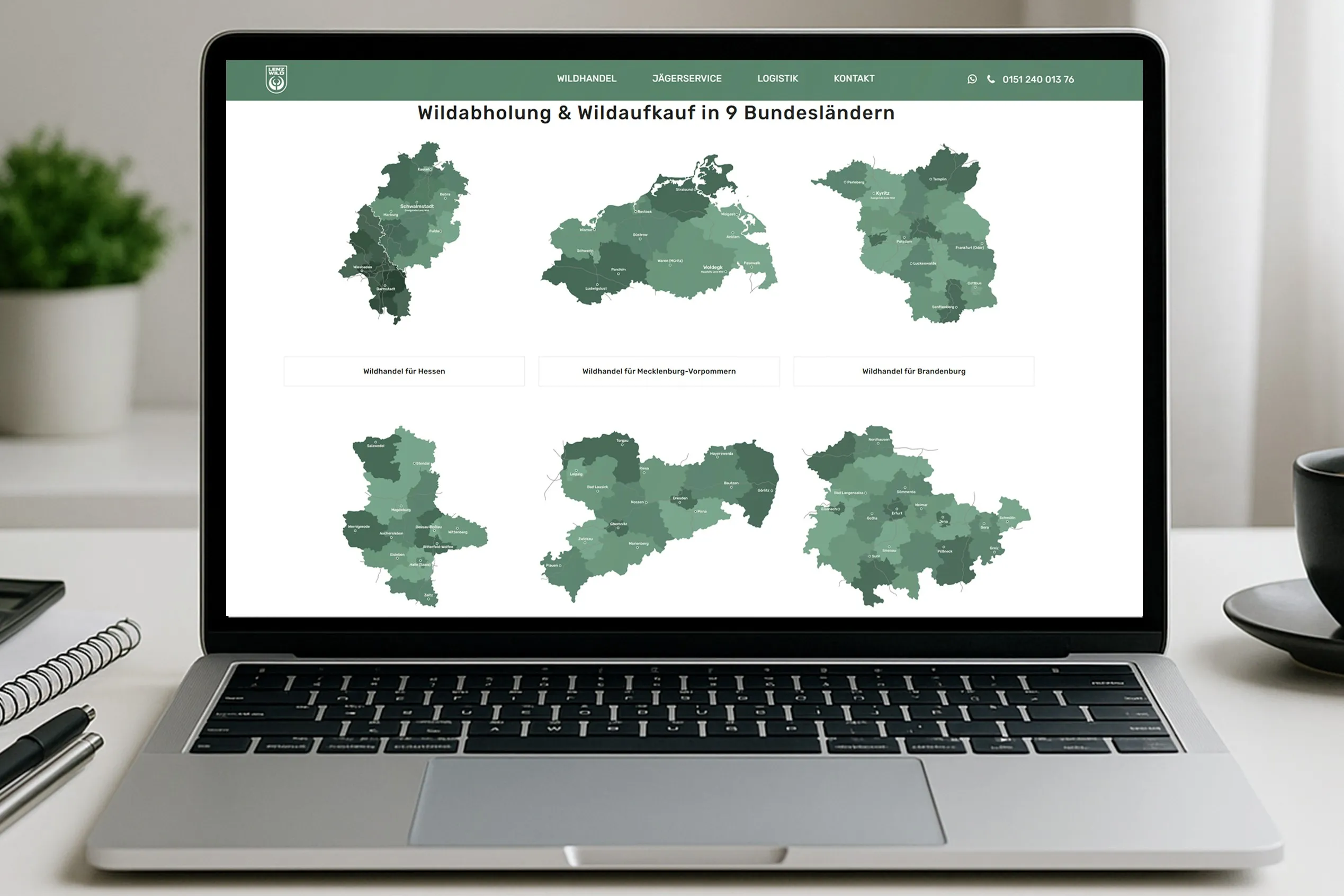
Yes, it's a little cheat to create landing pages for local SEO for cities where you're not. The most important thing here is not to cross the border and not to write that you are based there.
You can simply write "buy laptop in Berlin". The person buys it in Berlin. Pays for it in Berlin, receives it by post in Berlin. And it doesn't matter that it was sent from the warehouse on the Polish border! 😄
Anatomy of a proper city landing page
A good local landing page is not just a copy of the main page with "Berlin" replaced by "Munich". Google recognizes such tricks in seconds and can penalize for duplicate content.
Structure of an effective local landing page: H1 with city and main service: "iPhone repair in Hamburg - fast and high quality". Block with benefits of working with your business specifically for residents of this city. Case studies or reviews from customers from this city (if available). Detailed information about directions and contact. FAQ with city-specific questions.
Technical implementation
The URL structure should be logical: deinedomain.de/muenchen/iphone-reparatur or deinedomain.de/staedte/muenchen. The main thing - consistency for all cities.
Each landing page must contain contact details that are specific to that city. If you only have an office in Berlin, be honest about that. But add information on how residents of other cities can work with you more conveniently.
Schema markup for local businesses helps Google better understand the geographic mapping of each landing page. LocalBusiness or Service Schema with the city specified in serviceArea.
The reality of local SEO
Local landing pages are not a magic wand. They only work if there is real demand in these cities and you can really serve customers from there qualitatively.
Better to create 5 quality landing pages for cities where you have real customers and positive experiences than 50 template pages "just in case". Google values quality and relevance, not quantity.
Remember: Local SEO is about trust and proximity to the customer. Be honest in your geographic ambitions and the results will not be long in coming.
Monitoring & analysis - the holy grail of SEO success measurement
For it is written in the holy scriptures of analytics: "What is not measured is not managed. And what is not managed turns into chaos and a waste of money.Therefore, measure everything that moves, and what does not move - measure it too, because it could suddenly come to life."
OffPage SEO monitoring is like being a doctor for your website. You constantly check the pulse (positions), measure the blood pressure (traffic), track the blood values (backlinks). And like a good doctor, you don't wait until the patient gets sick - you prevent problems in advance.
After 13 years, I have understood: In SEO, the winner is not the one who optimizes the best, but the one who tracks results the best and reacts faster to changes. Google changes algorithms, competitors attack, users behave unpredictably. Without constant monitoring, you are flying blind.
Tools for daily monitoring - my battle arsenal
Google Search Console - free, but limited
GSC shows how Google sees your website. This is the only tool that provides first-hand data. But it has disadvantages: 2-3 days data delay, limited history, no competitor data.
What I check every morning in GSC: new indexation errors, changes in the number of indexed pages, CTR drops for keywords, new manual penalties (god forbid there aren't any).
Ahrefs vs SEMrush vs Seobility - battle of the titans
Ahrefs - King of backlink analysis. Largest link database, most accurate data. Expensive, but worth every euro. SEMrush - universal soldier. Weaker in links, better in keyword research and competitor analysis. Seobility - German alternative, cheaper, well suited for the local market.
My choice: Ahrefs for serious projects, Seobility for small clients and beginners. SEMrush if comprehensive competitor analysis is required.
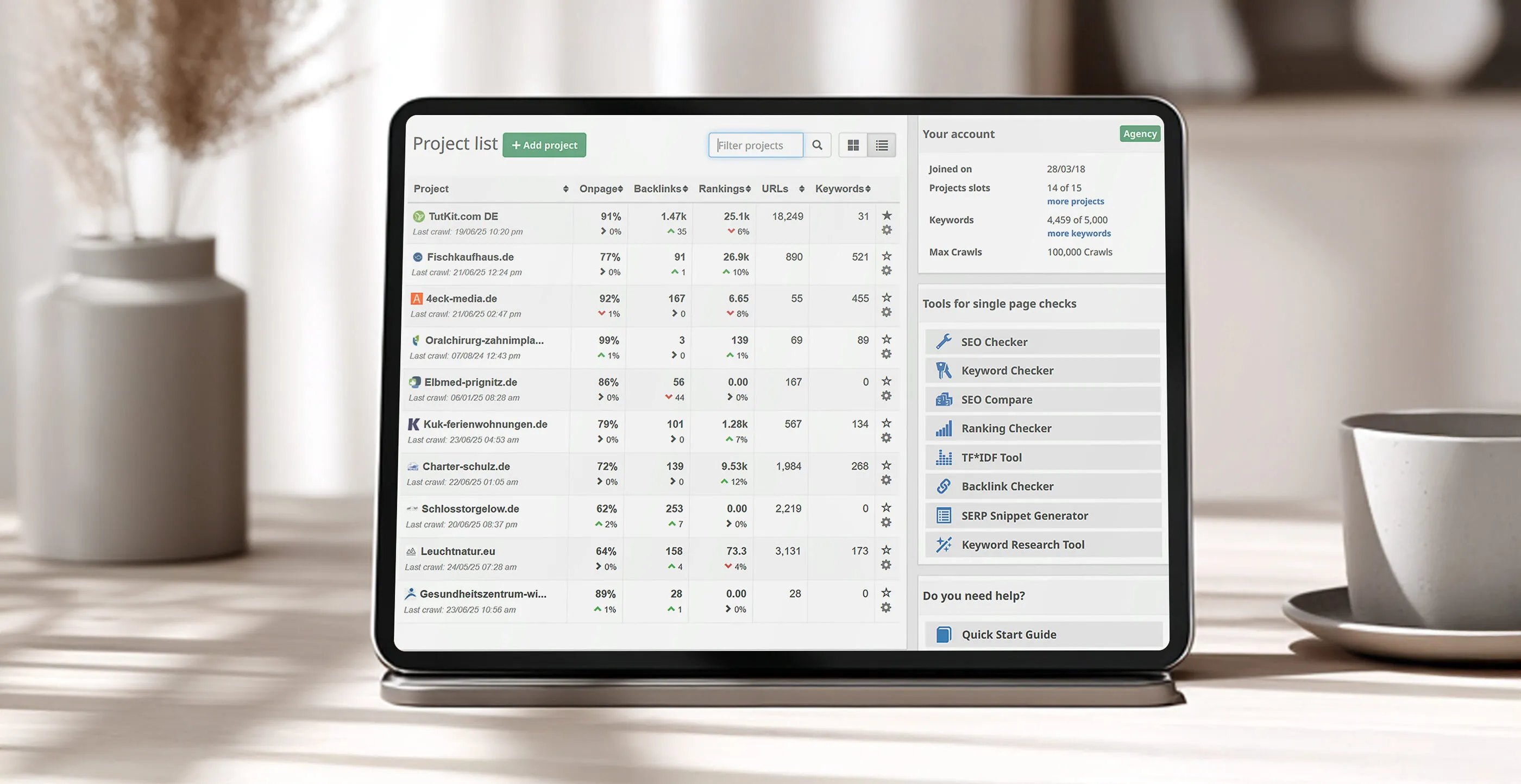
My morning monitoring ritual:
8:00 - coffee and position check in Seobility. If something has dropped more than 5 positions - root cause analysis. 8:15 - Google Search Console: new errors, traffic changes, new top queries. 8:30 - Ahrefs: new backlinks (are they good?), lost links (why?), DR/UR changes.
If all metrics are normal - the day starts quietly. If something is wrong - the detective work begins.
Conclusion: Your path to becoming a backlink missionary
Sorry it was a bit dry in places - but the topic is just that, OffPage SEO is not the most fun topic in the world. I still hope it was interesting and readable. I tried to write in a way that would have been understandable to me as a beginner many years ago, when I still thought SEO simply meant "inserting keywords into the text".
After 13 years of digital proselytizing, I understand that there is a lot of information on the internet, but practical wisdom is rare. I hope this article was just such practical wisdom for you and not another theoretical tome.
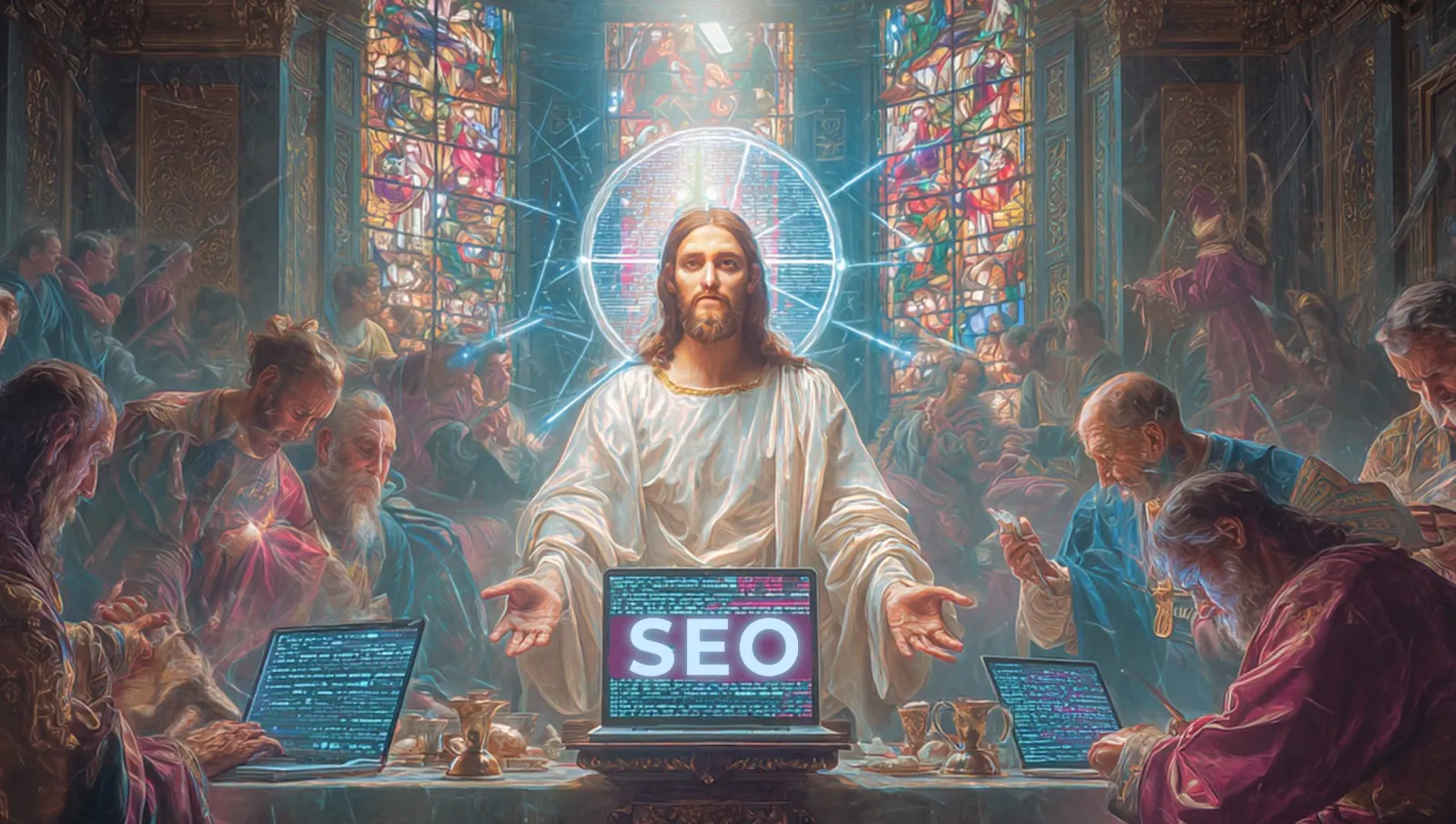
May the power of the Google algorithm be with you, and may its penalties not touch you. Let your backlinks grow like the grass in spring, and may your positions rise like incense to the heavens of search results.
May your competitors be weak and stupid, and your customers smart and solvent. Let your traffic flow like a mighty stream, and may your conversions multiply like the stars in the sky.
And when the time of the big algorithm updates comes, may your website stand like a rock in the surf, for it is built on the firm foundation of white hat methods. Go in peace, oh SEO warrior, and may fortune favor you in the holy work of digital proselytizing. Amen. 🙏
P.S. If something goes wrong with your SEO and you need professional help - you know where to find us: SEO agency 4eck-media.de
We'll make you an offer you can't refuse! 😄
